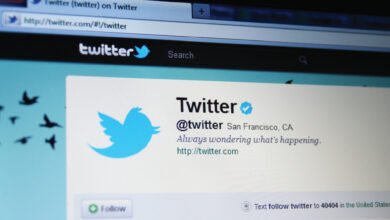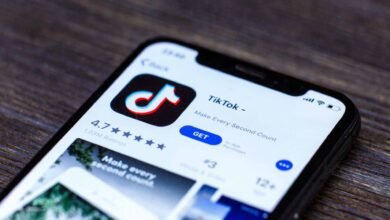
Over the past couple of years, non-fungible tokens (NFTs) have made their way to the top of the market for cryptocurrency, with billions of dollar’s worth of trading taking place and an upsurge of endorsements from famous people pushing digital art to the forefront of mainstream media sources of information.
You may right away mint (the act of creating or producing something) and submit your artwork to the blockchain by using non-fungible tokens generated on NFT platforms. This piece of writing will go through how to upload your artwork, pick the best blockchain, and post your first NFT for sale, among some of the additional requirements.
Key Thoughts:
- Unique digital assets referred to as non-fungible tokens (NFTs) are stored on a blockchain.
- Users can upload digital media and sell it on an NFT platform by setting up an NFT.
- NFT creation can be done on a variety of blockchains, with Ethereum being the most popular with consumers.
In the last year, NFTs have grown into a cultural phenomenon that frequently makes news due to celebrity engagement, antics, scams, and legal battles. There are still many reasons why someone would want to try their hand at producing one, even if it’s difficult to predict whether they will maintain or regain their popularity after a market dip or two. In a market where creative individuals have made millions of US dollars who can resist?
Before we get into how to build an NFT utilizing two of the most well-known markets, let’s first examine the basic information about what an NFT is and the choices you might have to make before opting to sell one.
Leading NFT Use Cases:
NFTs are an emerging technology that continues to be researched and used in a variety of fields. These are just a few of the primary uses for NFTs:
The Arts:
NFTs may be utilized to tokenize digital art, including photographs, interactive operations, and even AI creations. It makes it feasible for artists to create, distribute, market, and track their digital works.
Videos:
NFTs can be utilized for portraying video stuff, spanning movies, music videos, and even live sports clips. By doing this, video makers may make money from their work and reach an audience around the globe.
Music:
Similar to that, musicians and artists might tokenize their works as NFTs. They may now sell songs, albums, and sometimes concert tickets to their fans with the need for intermediaries. In addition, these artists have the option of making these products one-of-a-kind or limited.
NFTs and Collectibles For Videogames:
Digital treasures including trading cards, virtual animals, or in-game objects are another type of NFT. Since the introduction of NFTs, their scarceness has never been so readily verified, and they may now be swapped similarly to tangible objects of art. In-game funds, characters, and in-game gear including armor, weapons, and skins are just a few typical examples of game NFTs.
Who can Make NFTs?
The reality that almost anyone with Internet access can generate NFTs serves as proof of how open, decentralized, and straightforward blockchain technology is. Quite a few individuals may now generate and experiment with NFTs because of the readily available and democratization of blockchain technology. This involves artists, musicians, game developers, and others. However, it’s also important to keep in mind that creating NFTs calls for a little experience with blockchains and the processes required for minting NFTs.
How to Put Together an NFT:
Step 1: Choose a Blockchain:
Pick which blockchain platform you want to construct your NFT on. Though Ethereum is commonplace, there are plenty of other viable choices, notably BNB Chain, Cardano, Solana, and EOS. Before finalizing the choice, you can start by examining the specific requirements, fees, and compatible currencies of each platform.
It’s important to choose the blockchain that best suits your requests because it will keep a permanent record of your NFT. Once your NFT is minted, bear in mind that you can not alter your blockchain selection.
Step 2: Establish a Digital Wallet and Add Cryptocurrency to it.
To keep track of your NFTs and cryptocurrency, build a crypto wallet that is compatible with the blockchain that you’ve chosen. Maintain your seed phrase and private key secure; if you misplace either, you could lose access to your assets and wallet.
To pay for the gas costs paid when creating your NFT, you will also need to get your hands on the native coin of the blockchain that you’ve selected. Depending on how your wallet operates, you could purchase this on a cryptocurrency exchange or from the comfort of the wallet you have.
Step 3: Pick an NFT Platform:
Check that the platform you choose for creating your NFT is interoperable with the digital currency and wallet that you’ve chosen. In actuality, there is an extensive list of NFT marketplaces that make it easy for you to create NFTs. A few of them additionally serve as full-service NFT marketplaces, enabling everything from NFT minting to listing and purchases.
Step 4: Create your NFT:
Depending on the NFT marketplace you choose, there may be various possibilities and processes to make NFTs. The user experience must therefore be familiarized with before you may create an NFT. However, keep in mind these general suggestions when designing an NFT on an NFT marketplace.
- Connect your wallet: On the selected NFT marketplace, seek out the option to connect your digital wallet.
- Choose “Create NFT” from the following menu: Look for a “Create” or “Mint” section in the marketplace that will guide you through the NFT creation process. This usually includes choices for providing media files, customizing the NFT’s functionality, and providing additional information.
- Creating a media file: Depending on the kind of digital asset you want to create, there are different tools for creating an NFT. This means that you should look for specific software for photos, illustrations, or animations if you want to create digital art.
- To create and alter 3D objects, add colors and substances, and export the final product in the right layout, artists can also use specialized software. In a similar vein, photographers can enhance the final image using editing tools. Or, you might even employ AI to generate NFT art with only text inputs.
- Use the right medium formats, such as GLB for 3D artwork and JPG and PNG for digital artwork.
- Your media file here: Your preferred image, audio or video file, or additional component of media should be submitted.
- Complete the blanks: Give an identifier and description to your NFT. You may wish to include additional promotions, such as access to premium materials or possibilities (like invitations to closed chat groups or tutorial videos). Another frequent solution is to limit the number of NFTs that can be produced, whereas this strategy may or may not be suitable depending on the situation.
- Create your first NFT by selecting the “Create” or “Mint” button after giving the necessary details and selecting your choices (including the blockchain you are interested in using). Your request will be confirmed by the platform, and your NFT will be issued.
Step 5: Publish your NFT For Sale:
Your NFT may not be automatically published for sale after it has been developed. Find the option for marketing your NFT on the marketplace, then add the best-selling price and other information if you wish to sell it. This phase is optional, but it will help you advertise and market your creation with greater success.
What Is the Cost to Make an NFT?
An NFT has an array of expenses, primarily about the blockchain network on which it is produced. For example, the blockchain network imposes a transaction fee for handling and validating your transaction when you mint an NFT. These expenses are paid using the native cryptocurrency of the web, and they might change according to network demand and congestion.
The setting up of an NFT may incur a fee on some NFT marketplaces. This fee could be a set figure or a % of the sale price of the NFT. You can also be billed platform fees or royalties if you sell your NFT on a trading platform.
Finally, NFTs might face digital storage costs, similar to traditional art storage costs. You ought to factor in the cost of producing and storing your data via a centralized or decentralized storage solution when aiming to create an NFT.
How to Determine Your NFT Price:
The price of an NFT is determined by elements like shortages, utility, the reputation of the author, the visual appeal of the story, and community involvement. You can start by following a few concrete steps to decide on the appropriate price for your NFT. Analyze its originality and relevance inside virtual ecosystems first. Furthermore, analyze market trends and contrast your NFT to comparable goods. To make sure that your NFT is positioned competitively, you could use the NFT floor prices of similar collections as an indication to set a fair starting price for your own NFT.
However, keep in mind that estimating the price of an NFT requires both art and science. As a consequence, you ought to continue to be willing to make changes to prices to customer input and market conditions. Getting advice from other developers of non-fungible tokens can also be very helpful; there is a large crypto community, so it won’t be hard for you to find people who are keen to lend a hand.
Stealing NFT Content and Copyright:
Copyright applies to NFTs in the same way as it does to any other creative work, and using someone else’s work without their permission may have legal repercussions. Therefore, to reduce risk, the creator should confirm that they have permission to utilize the content for NFTs.
Obtaining the right way to use the content for the NFTs is one of the best ways to safeguard both you and your NFTs. In other words, the author must either be a beneficiary of the content’s rights or have agreement from the person who wrote the material. The risk of legal ramifications from stealing someone else’s invention outweighs the harm done to the original writer. Therefore, before using anything that isn’t your own to develop an NFT, it’s crucial to respect other people’s work and get permission from them.
Conclusion:
By providing an easy way to represent ownership and demonstrate the authenticity of various digital assets, whether they be digital artwork, music, or movies, NFTs have altered the world of digital assets. More producers are getting involved in the movement and exploring the technology behind NFTs as the method for creating one becomes more readily accessible. However, bear in that creating a successful NFT requires more than just producing a digital asset that consumers will find attractive; it also requires a solid understanding of notions like cost and value.
FAQs:
What Does it Take to Begin Making NFTs?
NFT prices may vary from as little as $0.01 to several hundred dollars on average. For example, the most costly blockchain, Ethereum, which costs an average of $70, permits the issuance of NFTs. However, there are many instances where building your own NFT can cost you more than $500 during its most costly period.
Is Selling NFT at Risk in any Manner?
Malicious actors can also pose as well-known NFT artists and sell artwork that is misrepresented as being created by the famous NFT artist. Due to problems like fake NFT giveaways, copyright theft, fake storefronts, and NFT artist impersonation, online fraud continues to be a cause for worry in the NFT market.
Can I Create an NFT Without any Investment?
Yes, some platforms allow you to set up your NFT at no cost. Platforms such as OpenSea and Rarible, according to The Verge, enable you to create NFTs on Ethereum without paying any fees. It is also referred to as “lazy minting” as it allows you to create an NFT and sell it without having it uploaded to the network.






